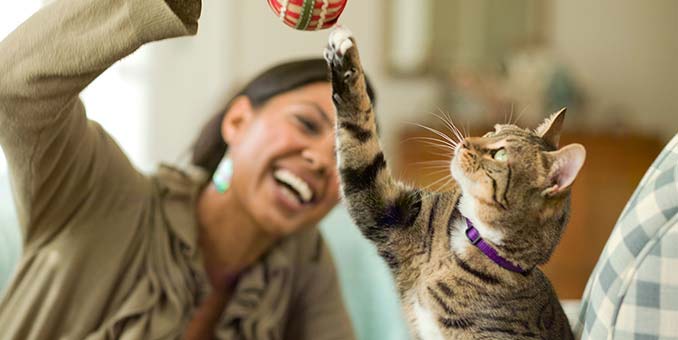
Pets and COVID-19: What You Need to Know
As communities respond to COVID-19 it is important to have plans for your pets as well as yourself. To help keep families together, OMHS encourages you to include your pets in the plans you make in response to this emerging situation.
This includes proactively identifying a caretaker who could help with pet care in the event that you no longer can. If an emergency caregiver’s assistance is needed, make it easier for them by having all of your pets’ information in one place. This should include a written pet plan (see further below).
At this time there is no evidence to support that our companion animals, particularly dogs and cats, can develop the disease or transmit the disease to humans or other animals. The best place for people and their pets is at home, together. Your veterinary office will have the most up to date information about pet health.
Here are some additional steps you can take to protect the health of your pets:
Wash your hands
When handling and caring for animals, basic hygiene measures should always be implemented. This includes washing your hands thoroughly throughout the day and before and after direct contact with your pets, their food or their supplies.
Designate an emergency caregiver
Proactively identify someone who could help with their short- or long-term care in the event you are unable to care for your pet. Consider a family member, friend, neighbor, or your favourite boarding facility. Ensure your designated caregiver is prepared to take on your pet(s) should you require a place for them to go. Have a backup person ready in the event your caretaker becomes unavailable.
Create a pet plan
If your emergency caregiver’s assistance is needed, make it easier for them by having all of your pets’ information/supplies in one place. Consider including things like habits, daily routine, food preferences, medical conditions and medications taken, your veterinarian contact information, nearest emergency clinic, and any behavioral tendencies.
The plan should also include basic information like your pets breed, age and name. In addition to having your pet’s medication in one spot, write down what each medication is and what strength they take so there is no confusion if something is missing, or runs out. Have a pet carrier, or leash and collar in an obvious spot.
Have pet supplies ready
Prepare a kit with essential supplies to have on hand in the event of an emergency. Your emergency kit should include a 30-day supply of your pets’ medications, as well as at least two weeks’ worth of food. You should also include a crate so that your pet can be contained by the new caregiver. In the case of cats and dogs they should also be wearing ID that traces back to you in the event that the caretaker is unavailable and the pet becomes lost, so that the OMHS can return the pet.
Spending quality time
Dogs and cats are born athletes, workers and powerful hunters, so it’s important to keep them active. If you are staying at home with your pet try to find fun things to do like trick training for dogs, having playtime with toys for cats, or making food enrichment toys for small animals. If you have found a fun way to spend quality time with your pet please share it with us!
